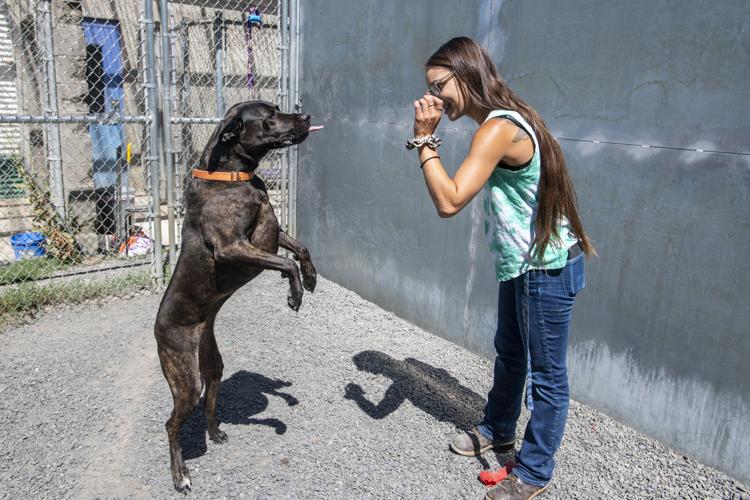
Hot Dog! Summer Precautions To Keep Pets Safe
Listen
(Runtime 1:48)
Read
At the Humane Society of the Palouse, staff start limiting outdoor time for dogs early in the summer.
“Our rule of thumb here is anything above 70 degrees, animals aren’t out for anything longer than an hour at max,” said Sierah Beeler, the humane society’s director.
Pets should also never be left in the car if the temperature rises above 60 degrees, Beeler said, and pet owners should make sure they’re adjusting how they exercise and shelter their dogs and cats in the hot weather.
Some breeds of dogs are also at a higher risk for heat stroke. Large dogs like Mastiffs, Great Danes and larger labradors, as well as flat-faced breeds like Bulldogs, Boxers, Shih Tzus and Pugs are all at a higher risk, said WSU College of Veterinary Medicine Dr. Jessica Bell.
“It takes more to cool those big bodies off,” she said. “(And) breeds with the flat faces, they’re at a high very high risk of heatstroke and heat exhaustion just because they cannot pant and cool themselves off as quickly.
Unlike humans, dogs can’t sweat except through their paws, so they rely primarily on panting to cool themselves.
In the summer, dogs should be taken on walks before 9 a.m. or after the sun sets, Bell said, and pet owners should test how hot pavement is on their hand before taking dogs on walks.
“If it’s too hot for your hands and feet to be on it, it’s too hot for your dog’s feet to be on it,” she said.
Dogs that live primarily outdoors will be acclimated to higher temperatures and at a lower risk of heat illness, but may still need to be brought in if they lose access to shade or their water gets hot.
“It’s really important to notice when they’re seeking shade more often, or they’re stopping to drink, looking for water,” Bell said. “If they’re excessively painting, and it’s not calming down — like they don’t relax in the shade, and stop panting or at least slow down, those are some easy things for owners to look at when they’re outside with them.”
If owners can, early mornings around 5 or 6 a.m. is even better, Beeler said.
“We all love to go on hikes and things like that, but right now it’s just not the time to do it,” she said. “We’re already hitting 80 degrees come 8 or 9 o’clock in the morning.”
If dogs do get overheated, it’s best to take their temperature and call a vet, Beeler said. Cool towels can also be used to help cool pets off, but ice water should be avoided as it can lead to shock.
To help keep dogs occupied during the middle of the day, Beeler suggests enrichment like puzzle feeders and freezing foods like peanut butter, baby food or chicken broth in feeding bowls.
Treats like rawhide and toys can also offer distraction, but may require some supervision.
“If they’re given (rawhide) they’re always monitored, (and) we take it away when it gets maybe a couple inches long, just so we make sure they don’t swallow that,” she said. “Rope toys, things like that, snuffle mats, we don’t worry as much. But we always make sure we pull it before we leave in the evening.”
Outdoor and feral cats are also at a high risk for heat stroke, Beeler said. The humane society has had several cats come in overheated.
“People don’t really bring their cats in their cars, so we don’t worry about that too much. But it’s always a concern if we see cats out in the hot weather,” she said.
For any outdoor animals, including livestock and horses, access to adequate shade and cool water is important, Bell said. Equestrians should also avoid over-exercising their horses during peak temperatures.
This report is made possible by the Lewis-Clark Valley Healthcare Foundation in partnership with Northwest Public Broadcasting, the Lewiston Tribune and the Moscow-Pullman Daily News.















